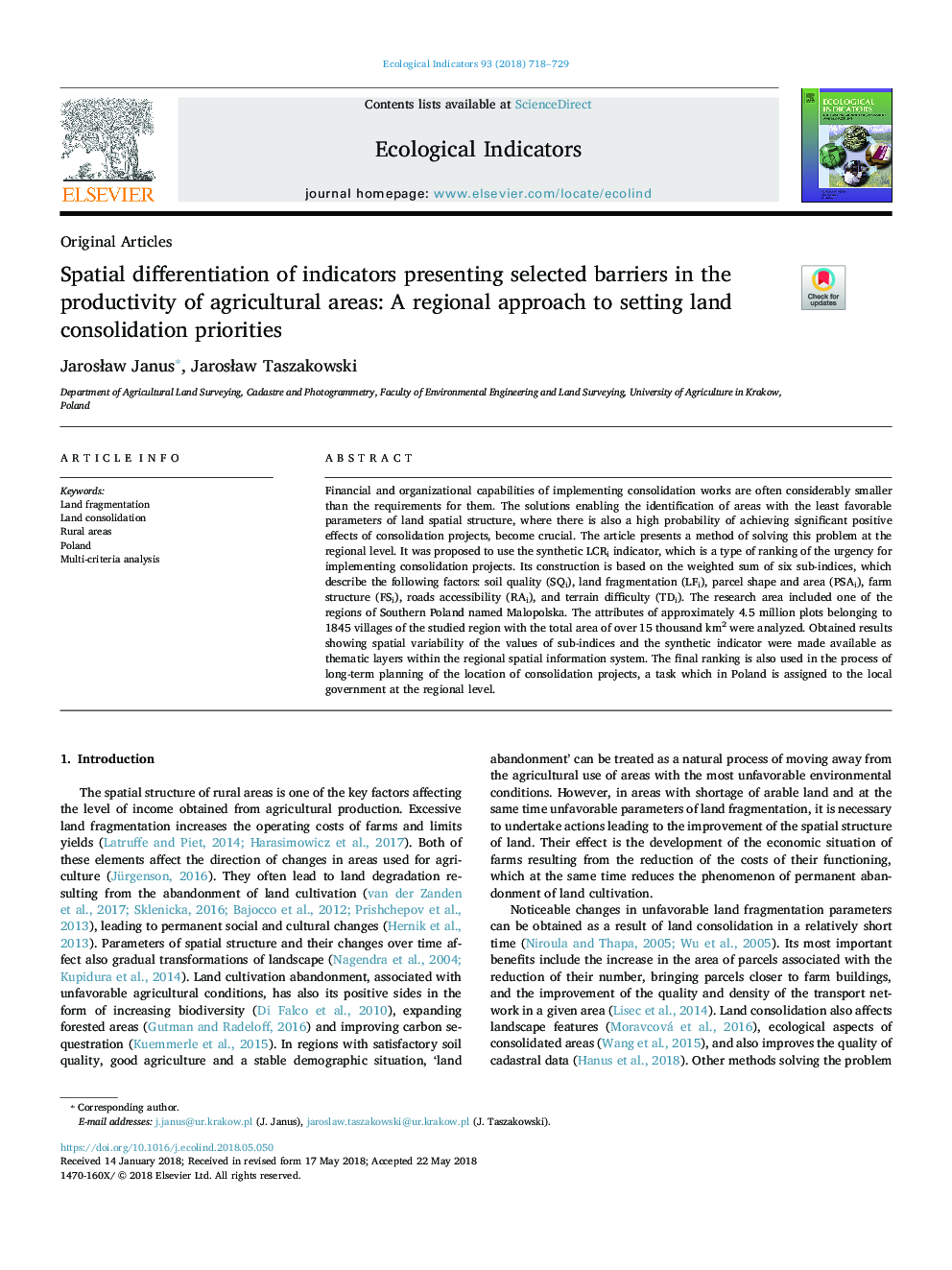| Article ID | Journal | Published Year | Pages | File Type |
|---|---|---|---|---|
| 8845210 | Ecological Indicators | 2018 | 12 Pages |
Abstract
Financial and organizational capabilities of implementing consolidation works are often considerably smaller than the requirements for them. The solutions enabling the identification of areas with the least favorable parameters of land spatial structure, where there is also a high probability of achieving significant positive effects of consolidation projects, become crucial. The article presents a method of solving this problem at the regional level. It was proposed to use the synthetic LCRi indicator, which is a type of ranking of the urgency for implementing consolidation projects. Its construction is based on the weighted sum of six sub-indices, which describe the following factors: soil quality (SQi), land fragmentation (LFi), parcel shape and area (PSAi), farm structure (FSi), roads accessibility (RAi), and terrain difficulty (TDi). The research area included one of the regions of Southern Poland named Malopolska. The attributes of approximately 4.5 million plots belonging to 1845 villages of the studied region with the total area of over 15 thousand km2 were analyzed. Obtained results showing spatial variability of the values of sub-indices and the synthetic indicator were made available as thematic layers within the regional spatial information system. The final ranking is also used in the process of long-term planning of the location of consolidation projects, a task which in Poland is assigned to the local government at the regional level.
Related Topics
Life Sciences
Agricultural and Biological Sciences
Ecology, Evolution, Behavior and Systematics
Authors
JarosÅaw Janus, JarosÅaw Taszakowski,
